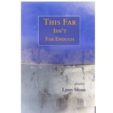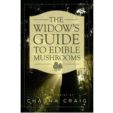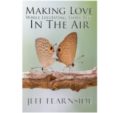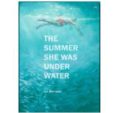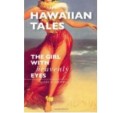One of the fiction-writing super powers I admire most is the ability to inhabit a wide range of characters and worlds, and to write about each of them with great empathy and understanding. In her story collection This Far Isn’t Far Enough, Lynn Sloan shows a special gift in this regard. She immerses us in the lives of everyone from a deceived and disillusioned widow, to an anxious soldier pulled into a possibly criminal scheme, to a worried mother of an aspiring prizefighter. As Sloan explores the inner and outer and conflicts that these characters face, she does so with deep feeling and insight.
Looking to the past
There is much to praise about The Widow’s Guide to Edible Mushrooms, Chauna Craig’s début short story collection. But I was especially taken by the stories’ layered explorations of fraught relationships—and of relationships in transition, owing to divorce, death, or other circumstances.
In “This Is History,” the narrator reflects, retrospectively, on a time of transition in both her family and community. The story takes place at the site of a defunct Montana copper mine, where the narrator (then 12 years old), her parents, and brother have gathered with other locals to witness the destruction of the mine’s smokestack. For the narrator’s mother, whose father worked at the mine, the destruction is cause for sadness, even though the copper industry “left the land raped and polluted,” in the narrator’s eyes. As she observes, “My mother was susceptible to fantasies of golden pasts and golden futures that would erase the daily shin-banging and toe-stubbing of the present.”
The central characters in The Expense of a View, Polly Buckingham’s dark and sometimes surreal story collection, face the kinds of suffering that many of us, if we aren’t experiencing them ourselves, would rather turn away from: grief over the loss of a loved one, drug addiction, domestic violence, parental abandonment, mental illness, poverty. Buckingham’s stories immersed me so deeply in these characters’ mental, physical, and emotional states that the barriers between their worlds and mine seemed to dissolve, giving me insights into experiences I might otherwise feel—or seek—distance from.
Jeff Fearnside’s début story collection, Making Love While Levitating Three Feet in the Air, is rich in so many ways: in its deep explorations of diverse lives and experiences; in its immersion in place, which often becomes a character itself; in the subtle surprises of several tales—surprises that, retrospectively, feel completely earned and natural.
But one of my favorite aspects of the book is the way it explores the solo mission—certain characters’ efforts to find their way, largely alone, through difficult periods or situations in their lives.
A creekside cabin in summertime: it seems like the setting for a peaceful family gathering, unless the family is the one that Jen Michalski brings together in her moving and deftly crafted novel The Summer She Was Under Water. Its members include a physically and emotionally abusive father who is struggling with mental illness; a kind yet conflict-averse mother who has tried to look past the years of damage her husband has done; and two adult children—a long-estranged sister and brother—who share memories of their father’s abuse and of a taboo bond they formed in the wake of it.
The gathering at the family’s cabin threatens to be uncomfortable at best, explosive at worst. But because Michalski gets to the heart of the characters and their conflicts with such care and feeling, she offers more than a strife-laden drama. Instead, her novel is a complex exploration of family dysfunction, one that holds out a measure of hope.
Too often, recreational travel, even to the most interesting and exotic places, has the feeling of skimming across surfaces. As we move from notable site to notable site, we are sometimes dazzled. More often, though, we are dazzle-proofed by preformed expectations (think Walker Percy’s “The Loss of the Creature”).
Our outsiderdom also keeps us at a distance. As we observe the locals and even other tourists, we may get the sense that intriguing stories are being played out all around us, but with rare exceptions, we are never immersed in them.
The great gift of Lee A. Jacobus’s new story collection, Hawaiian Tales: The Girl with Heavenly Eyes, is how deeply and richly it immerses us in the predicaments of its characters, from Hawaiian natives to tourists, and in the psychological and physical landscapes of their lives. Reading it, I truly felt transported.

